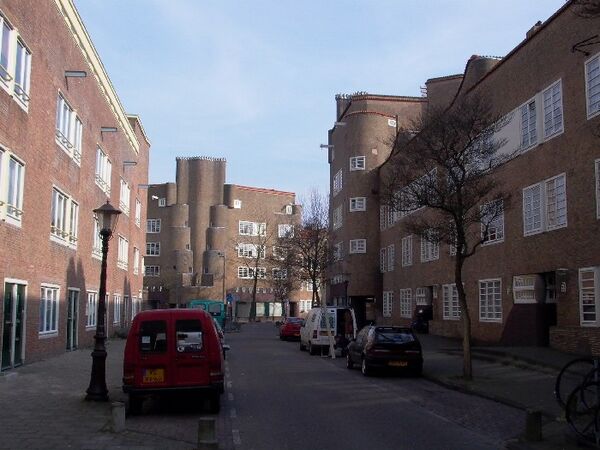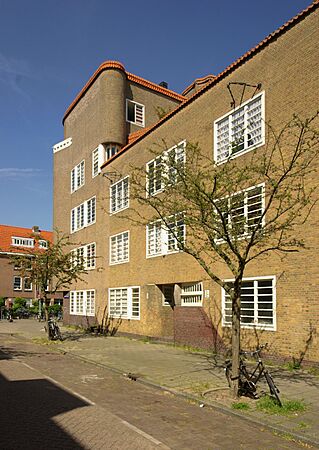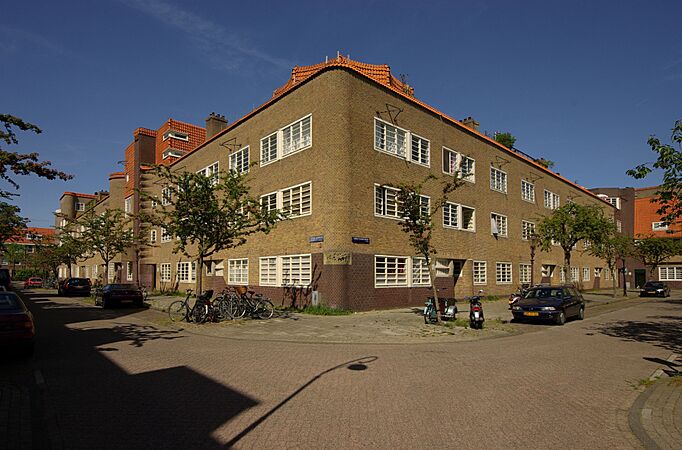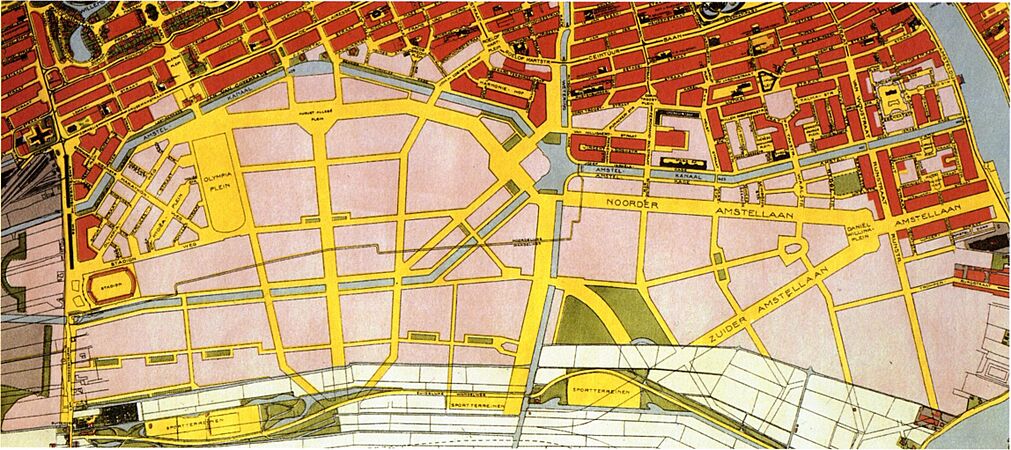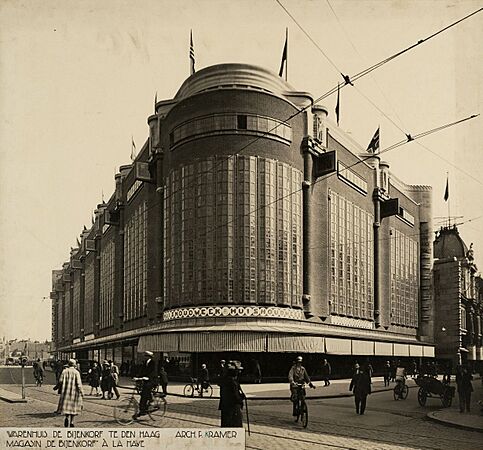Piet Kramer facts for kids
Pieter Lodewijk (Piet) Kramer (Amsterdam, 1 July 1881 – Santpoort, 4 February 1961) was a famous Dutch architect. He was one of the most important architects of the Amsterdam School. This was a special style of Expressionist architecture.
From 1903 to 1911, Piet Kramer worked for architect Eduard Cuypers. There, he met other architects like Johan van der Mey and Michel de Klerk. In 1911, van der Mey was asked to design the Scheepvaarthuis (Shipping House). This building was for six Dutch shipping companies. Van der Mey asked Piet Kramer and Michel de Klerk to help him. The Scheepvaarthuis (built 1913–1916) is seen as the start of the Amsterdam School style.
Later, Piet Kramer worked with Michel de Klerk on the well-known De Dageraad housing project. This was in Amsterdam South (1919–1923). Outside Amsterdam, he built a very famous building: the De Bijenkorf Store in The Hague (1924–1926). After Michel de Klerk passed away in 1923, Piet Kramer became the main architect of the Amsterdam School. He led this style until it ended in the early 1930s.
During the tough economic times of the 1930s, the fancy Amsterdam School style became too expensive. A new, simpler style of architecture began to grow in Amsterdam. This new style was called Rationalism. It focused on practical buildings with clear spaces. The Amsterdam School, however, was more about creating buildings that fit into traditional streets and squares.

In the second half of his career, Piet Kramer mostly worked for the city of Amsterdam. He was an architect for canal bridges. He drew plans for more than 500 bridges! A total of 220 of his bridges were actually built. Sixty-four of these are in the beautiful Amsterdamse Bos park. Besides the bridges, he often designed the small bridge houses, metal railings, and the surrounding gardens. The sculptures on the bridges were usually made by Hildo Krop.
Piet Kramer passed away in 1961. At that time, the simpler Rationalist style was very popular. No art groups or museums were interested in his Expressionist work. Because of this, all his drawings and models were sadly burned.
Contents
Exploring De Dageraad Housing Project
De Dageraad (which means "The Dawn") is a housing project in Amsterdam. It was part of a bigger plan called Plan Zuid (Plan South) by Berlage. This project provided homes for working-class families. Piet Kramer and Michel de Klerk designed these buildings between 1920 and 1923. Piet Kramer's special designs can be seen throughout this project.
-
A map of Plan Zuid by Berlage in 1922, with De Dageraad on the right
Discovering Plan West Buildings
Plan West was another project that built homes for working-class families. Different architects from the Amsterdam School designed these buildings between 1922 and 1927.
Piet Kramer's Amsterdam Canal Bridges
Piet Kramer drew plans for over 500 bridges in Amsterdam. A total of 220 of his bridges were built. Sixty-four of these are in the Amsterdamse Bos park.
The Bijenkorf Store in The Hague
The De Bijenkorf Store is a famous building in The Hague. It is located at Grote Marktstraat and Wagenstraat. Piet Kramer designed this large store between 1924 and 1926.
See also
 In Spanish: Piet Kramer para niños
In Spanish: Piet Kramer para niños



